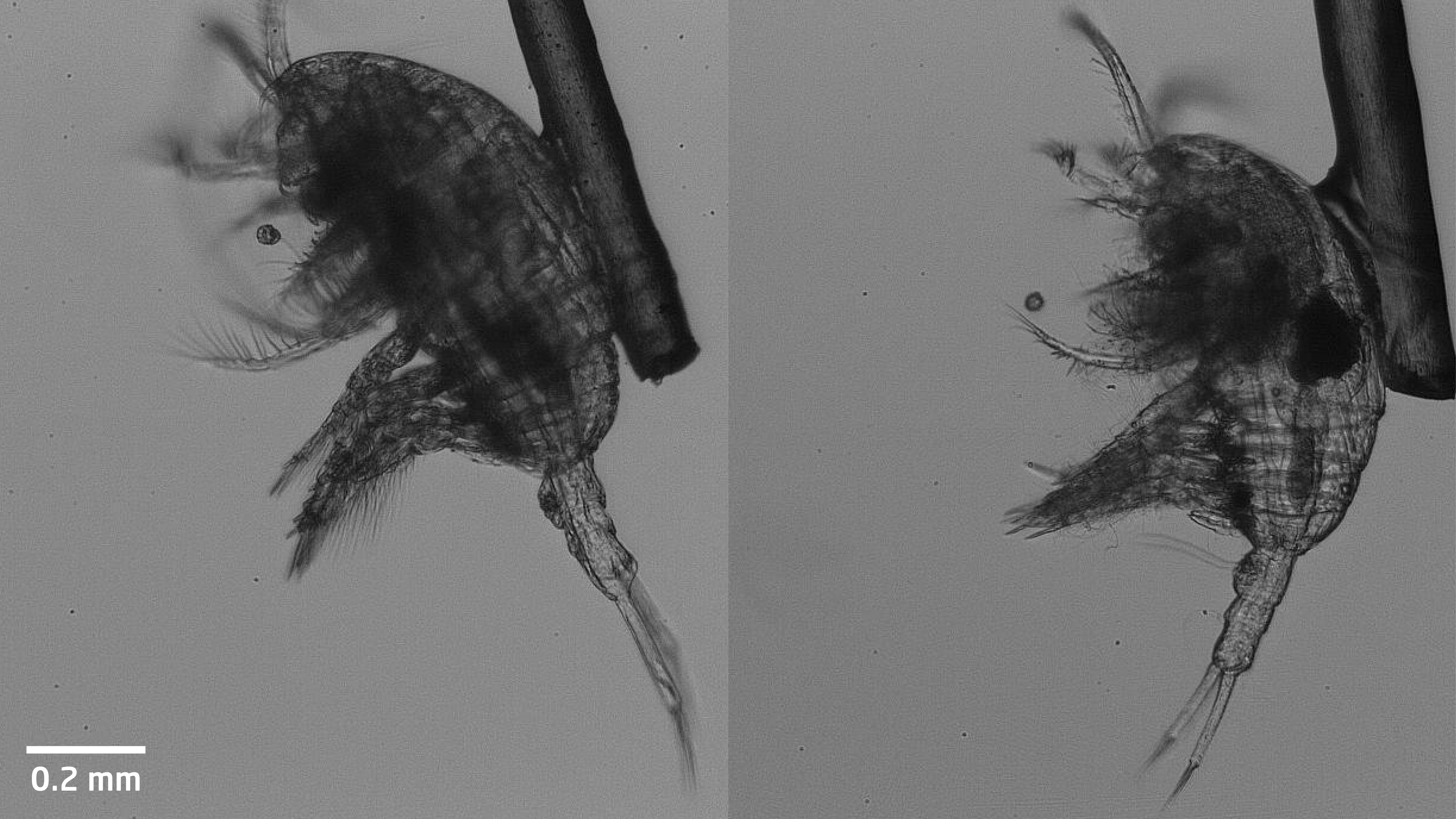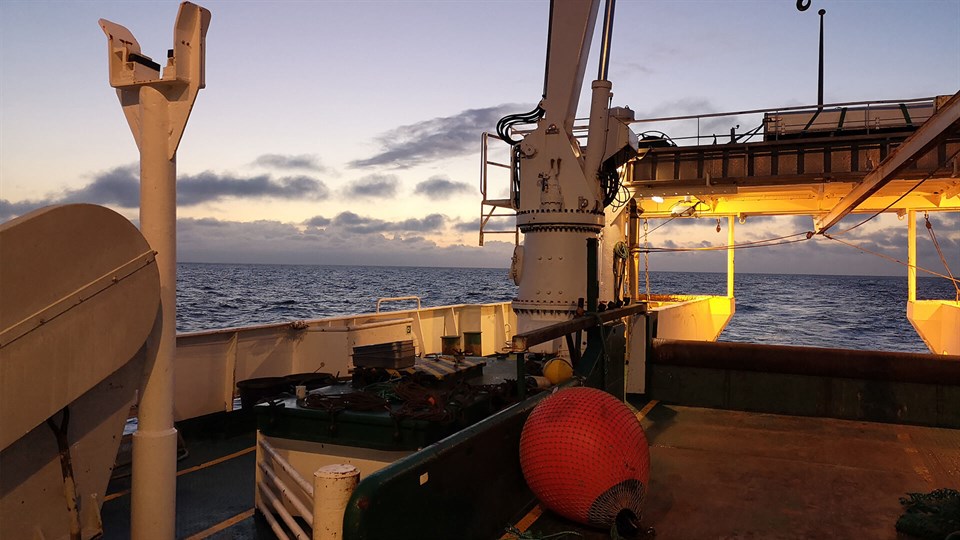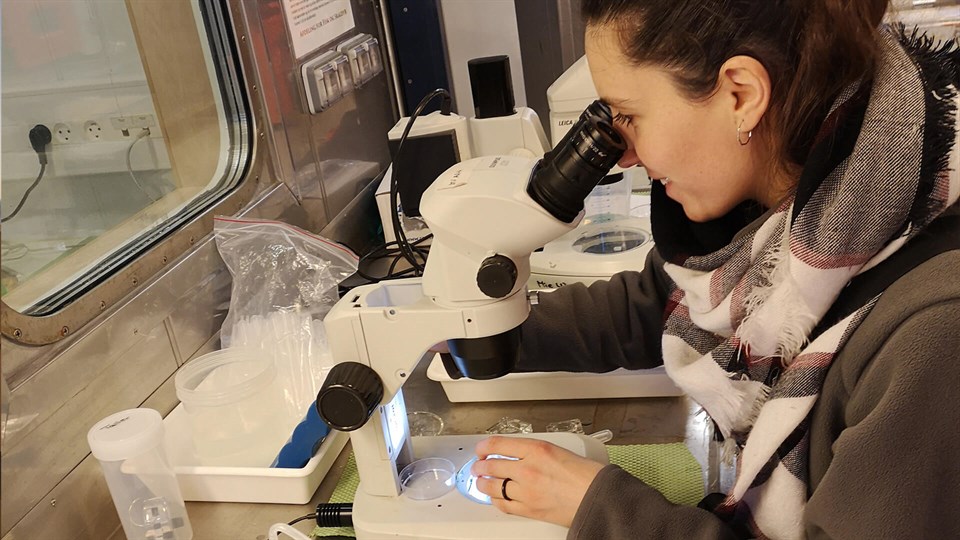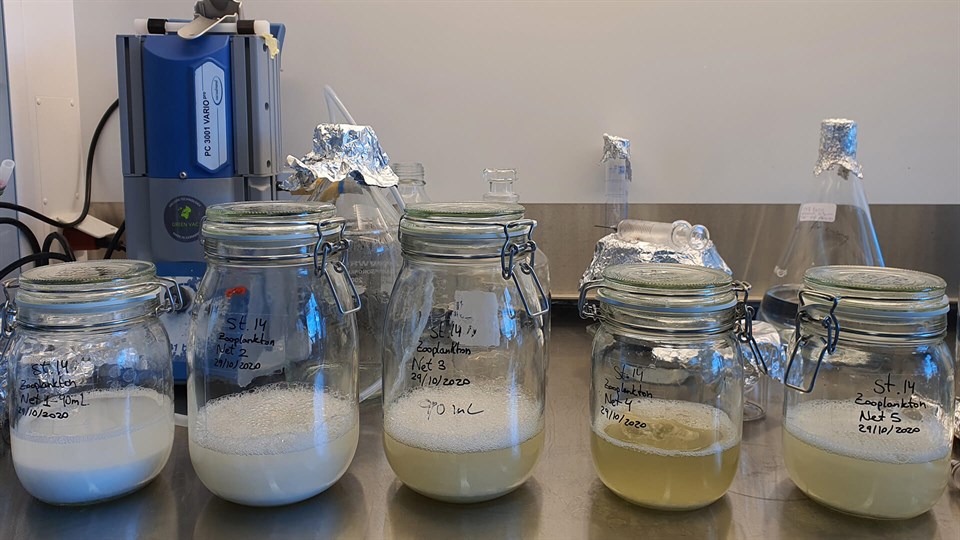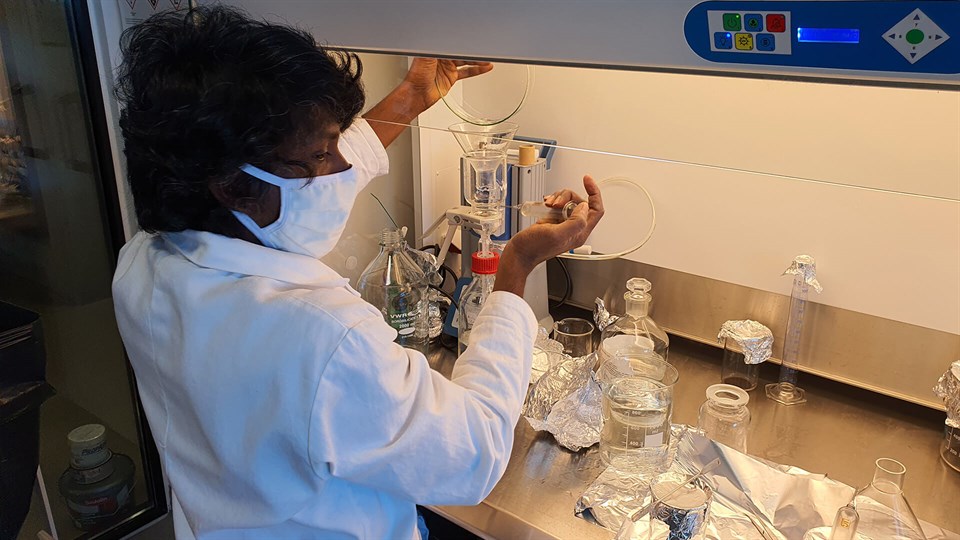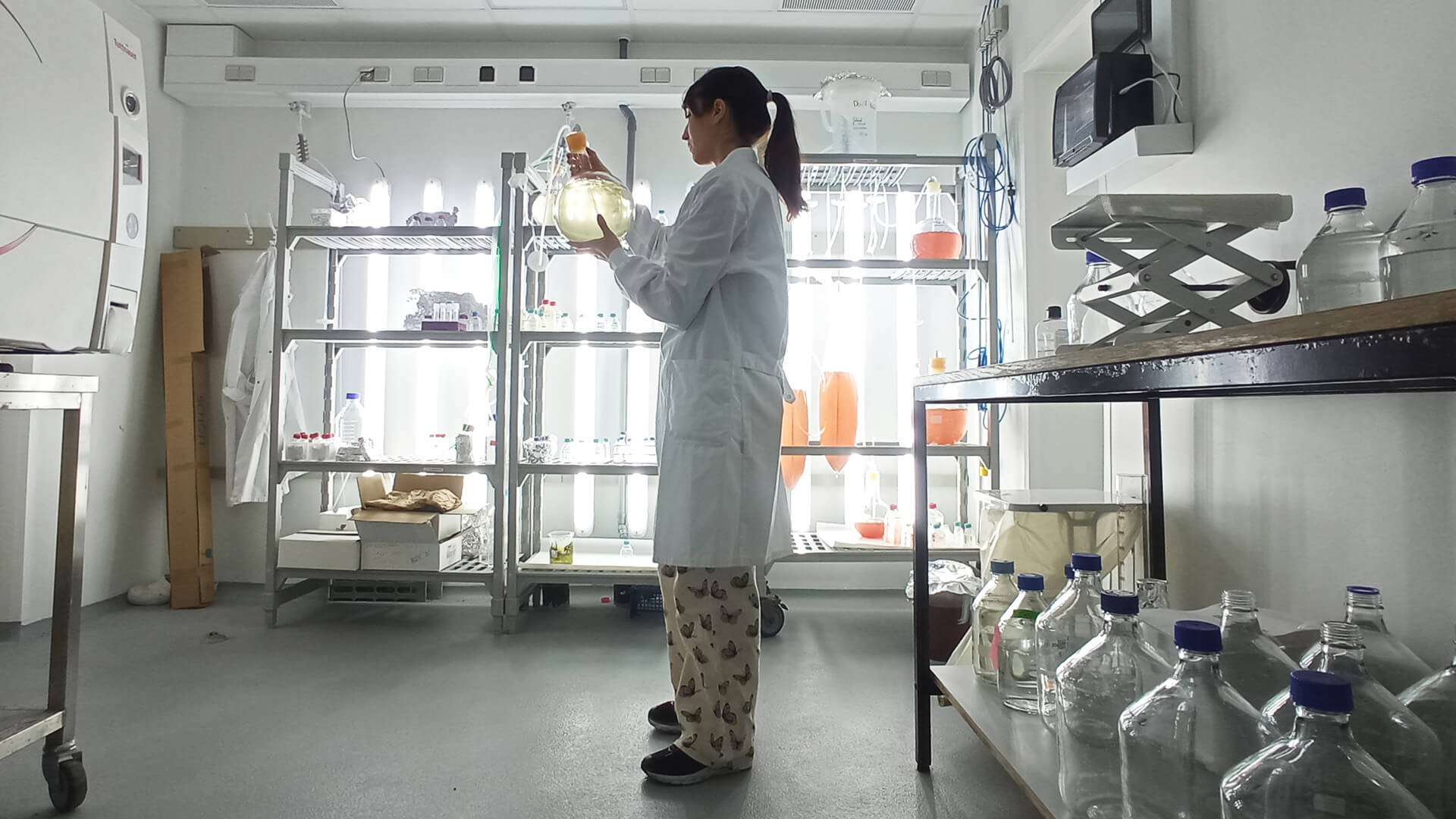Plastic particles are few and far between
The researchers found between 25 and 100 microplastic particles per cubic metre of water collected. In the samples with the highest measured concentration, this corresponds to one plastic particle per 10 litres of water. By contrast, the samples contained about 100,000 times more plankton than microplastics.
In total, 88 per cent of the microplastic particles captured by the fine-meshed nets are so small that they would escape the conventional Manta nets. According to PhD student Gunaalan Kuddithamby, not many studies have used this method—both because it is difficult to collect the samples and because it is expensive and time-consuming to analyse them.
DTU Aqua have conducted several studies that examined the smallest fraction of microplastic. These studies were collected in the waters around Greenland, and on an expedition from Denmark to the Caribbean that sailed through the ‘North Atlantic Garbage Patch’. Here, too, the researchers found smaller amounts of microplastics than they expected. Even the samples with the highest concentrations contained less than one plastic particle per litre of water.
As the presence of microplastics in the oceans will increase, partly because plastic waste there breaks down into much smaller pieces, Gunaalan Kuddithamby stresses the importance of repeating the measurements with these more precise methods to follow the development.
Tiny, fussy gluttons
The good news about the low microplastic concentrations is backed up by experiments at DTU that investigate what happens if copepods encounter the particles while they are eating. They show that the copepods are like fussy children who can detect pieces of celery in the spaghetti sauce and spit them out.
Video footage from the laboratory experiments shows that in four out of five cases, the copepods spit out the plastic particles.
“Even though they catch thousands of particles in their tiny mouthparts, they can tell that they’re not food, either because of the structure or taste of the particles. They taste hundreds of particles a minute, but when a plastic particle goes in, they spit it out,” explains Torkel Gissel Nielsen.
“If they do eat the microplastic particles, we’ve shown in other experiments that they excrete them—just like kids who’ve accidentally eaten small beads,” he says.
This also means that the microplastics don’t bioaccumulate when the copepods become meals for larger organisms, which in turn are eaten by larger animals, and so on.
